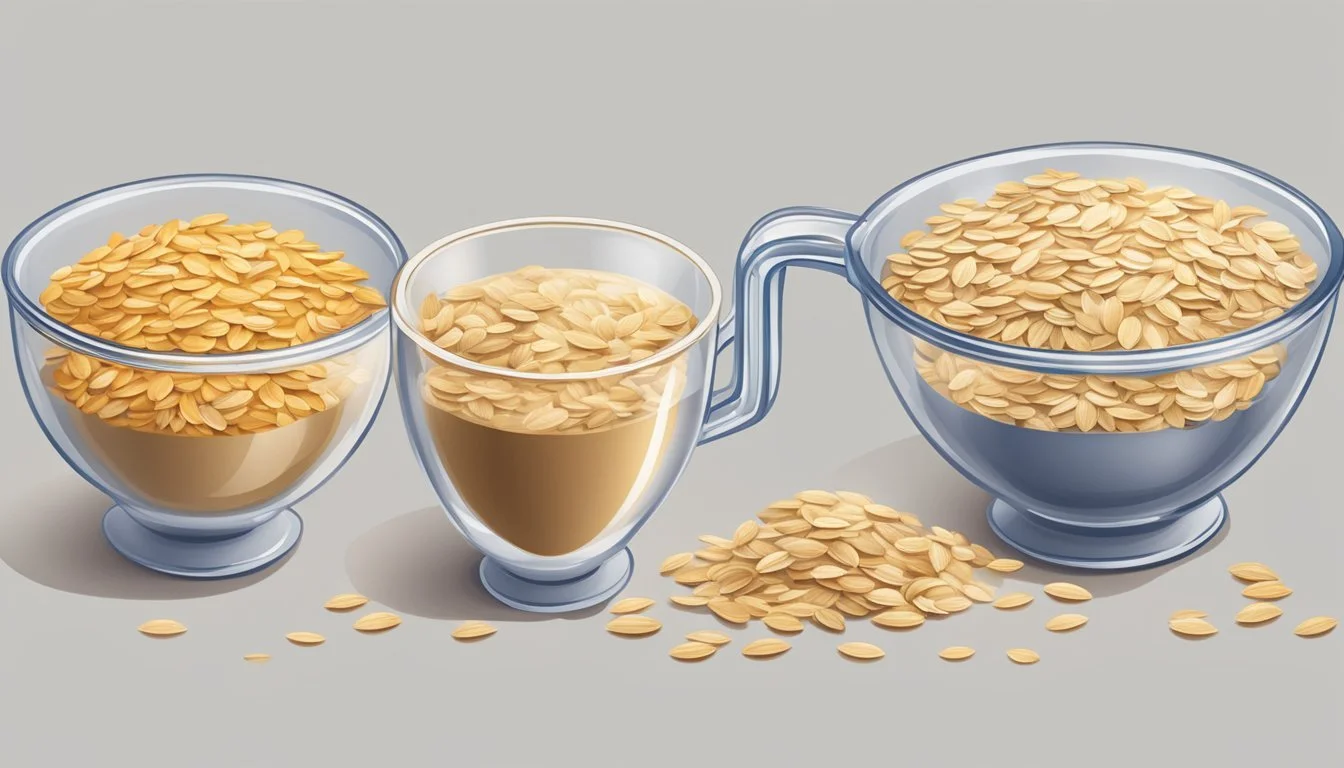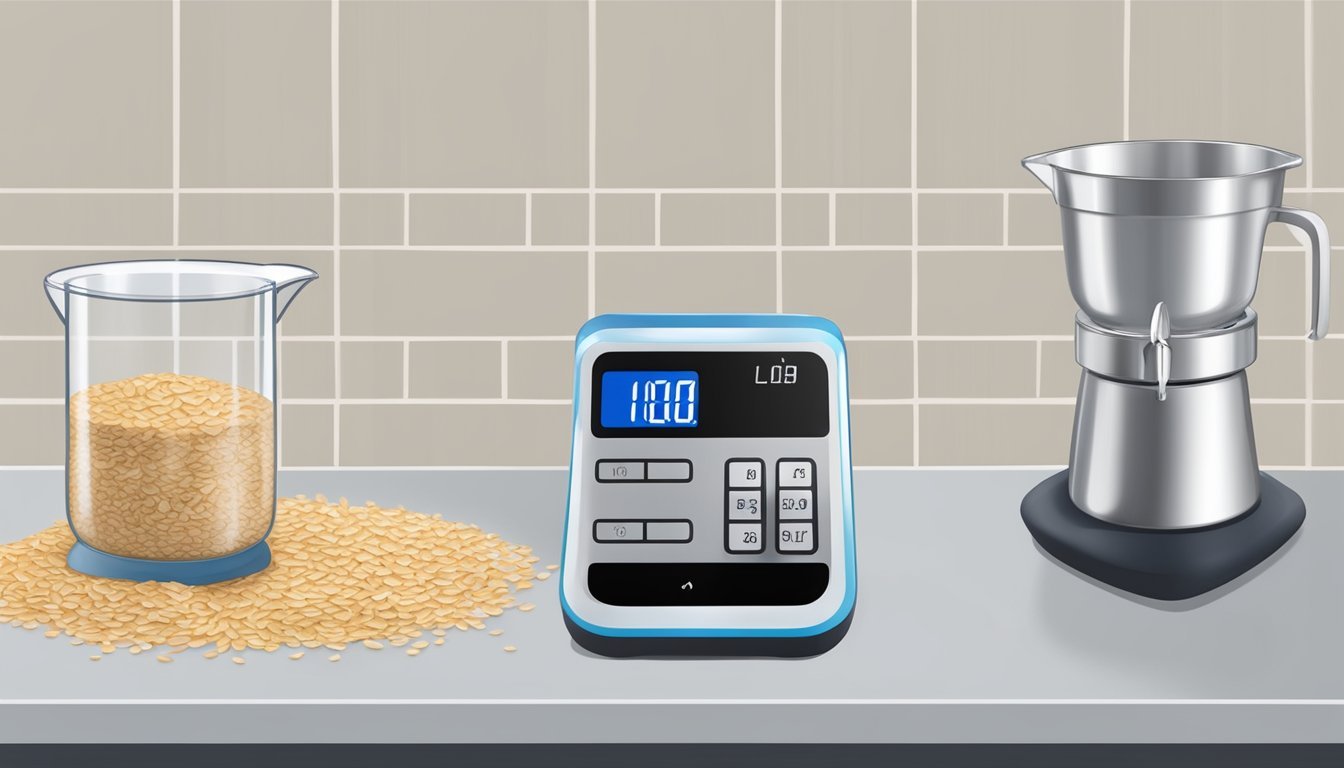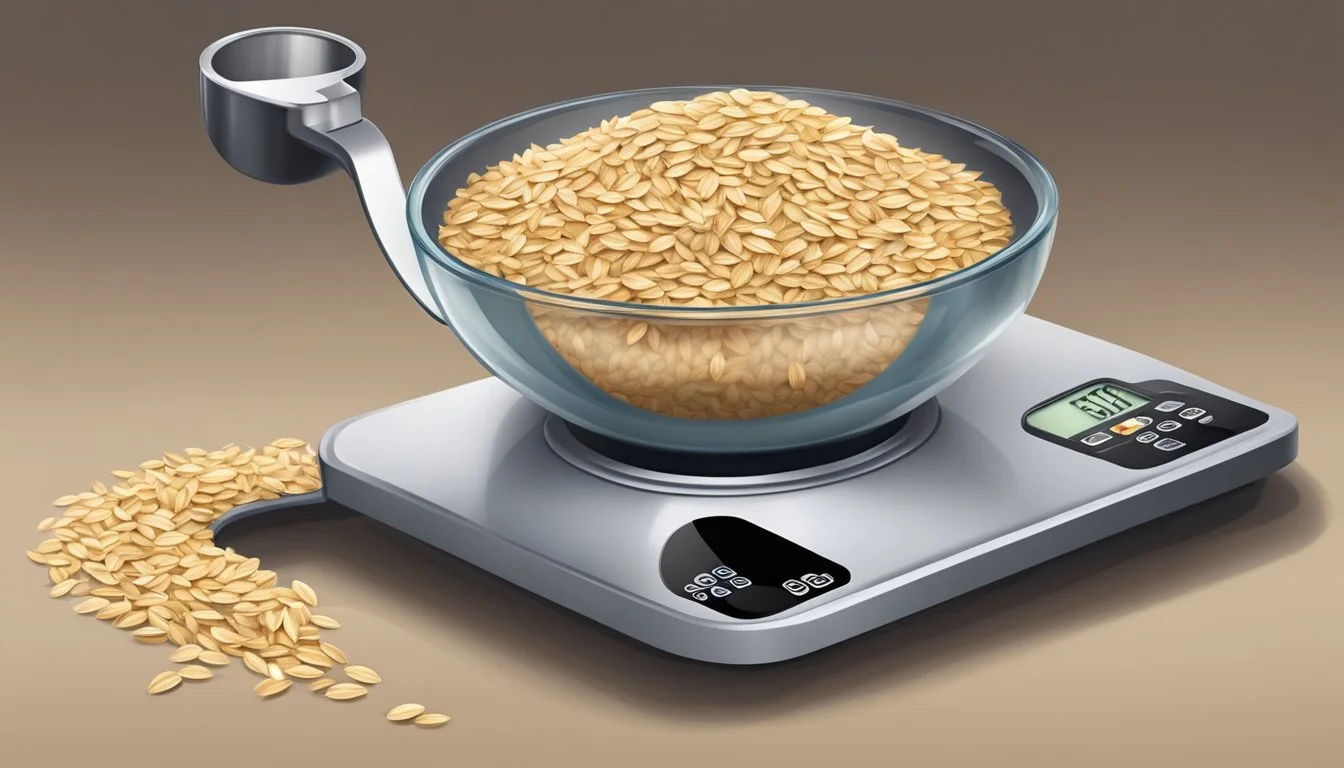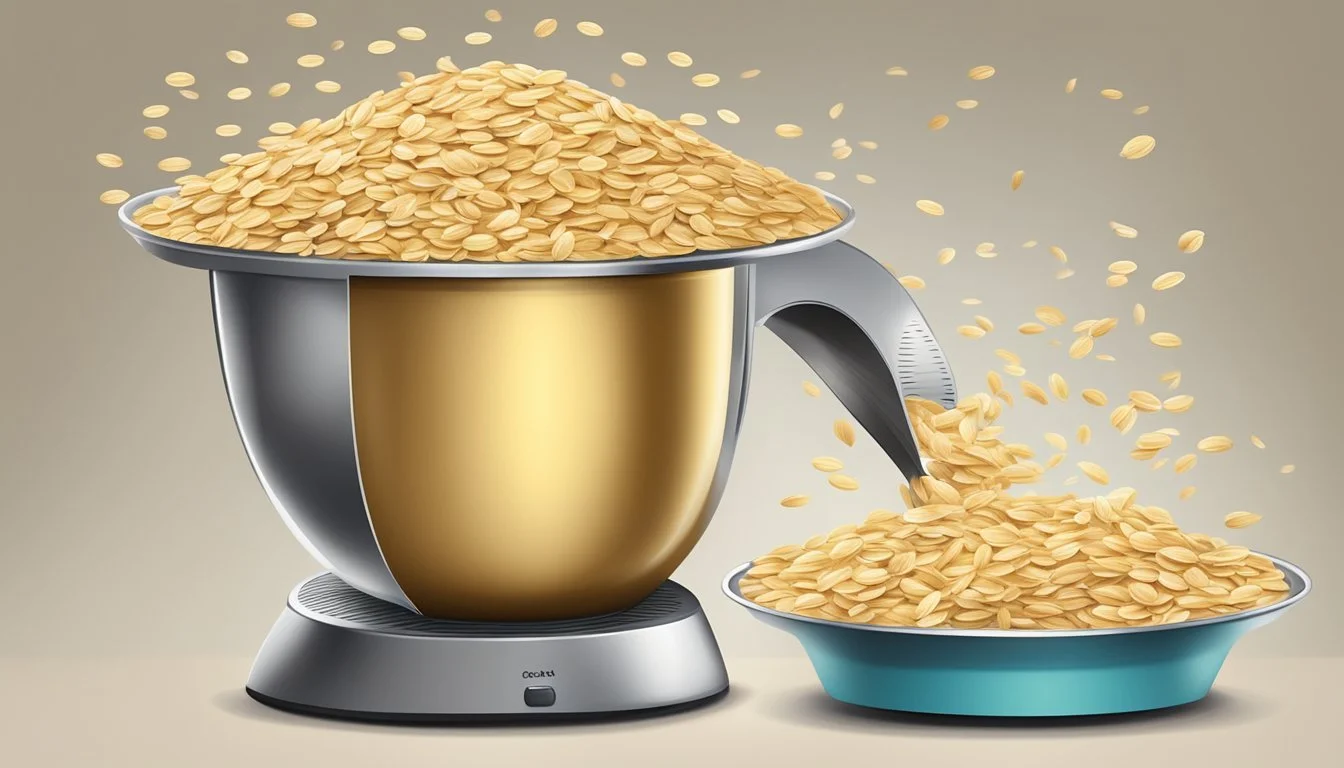How Many Cups in a Pound of Oats
Measuring Your Way to Perfect Portions
When measuring ingredients in the kitchen, understanding the relationship between weight and volume is essential. This is particularly true for oats, a common ingredient in a variety of dishes ranging from breakfast oatmeal to baked goods. One pound of oats does not translate to the same volume in cups across the board, as the cup measurement can be affected by the type of oats and how they are processed.
Determining the number of cups in a pound of oats can vary depending on the kind of oats being used. For instance, 1 pound of regular old-fashioned oats typically equates to approximately 3 to 3.5 cups. This slight variation is due to the oats' size and density. However, when considering quick oats, which are rolled thinner and are denser, a pound can yield about 4 to 4.5 cups. The denser the oats, the more cups they can fill.
It is also important to be as precise as possible in conversions, especially when following a recipe. A pound of oats is said to equal around 2.91 to 3 US cups, to be more accurate, but all numerical figures are considered approximate due to potential slight variations in measurement. When cooking or baking, understanding these conversions can greatly impact the success of the dish, making it critical to get them right.
Understanding Oat Measurements
When measuring oats, one must consider that weight and volume are distinct units of measure, with the type of oats influencing the conversion. Precision in cooking and baking with oats calls for an understanding of these measurements.
Weight vs Volume
Oats are commonly sold by weight, with the standard being pounds or grams, while recipes often specify volume in cups. Weight measurement is consistent, as one pound of oats will always be one pound. However, volume can vary due to factors such as packing density and how the oats settle. For instance, one cup of rolled oats may weigh differently from one cup of steel-cut oats due to their varying densities and textures.
Table: Oats Weight to Volume Conversion
Type of Oats Weight (Pounds) Approximate Volume (Cups) Rolled Oats 1 2.91 – 3 Old-Fashioned Oats 1 3.5 – 4 Quick Oats 1 4 – 4.5 Steel-Cut Oats 1 (variable, typically less than rolled oats due to higher density)
Oats Varieties and Their Impact on Measurement
Different types of oats, such as rolled oats, steel-cut oats, old-fashioned oats, and quick oats, each have unique physical characteristics that affect how they measure out:
Rolled Oats: These oats are steamed and rolled flat, creating flakes that are relatively uniform, leading to a more consistent volume-to-weight ratio.
Steel-Cut Oats: They consist of whole oat kernels chopped into pieces and possess a higher density, meaning a cup weighs more than a cup of rolled oats.
Old-Fashioned Oats: Similar to rolled oats but with a larger flake, these may occupy more volume with the same weight.
Quick Oats: Processed more than rolled oats to cook faster, they are rolled thinner and sometimes chopped, allowing them to pack more densely into a cup.
It is important to note that the compaction of oats into the measuring cup will alter the outcome; thus, for accuracy, the 'fluff and spoon' method is recommended when using volume measures. A kitchen scale ensures precision when weight is critical, especially in baking.
Conversion Fundamentals
Conversion between units of weight and volume is essential when measuring ingredients for cooking or baking. Precision ensures recipe accuracy.
From Pounds to Cups
One pound of oats typically equates to approximately 2.91 to 3 US cups. This result may slightly vary depending on the type of oats and the measuring method used. A conventional method involves using a scale for weight and measuring cups for volume, and ensuring a level cup without compacting the oats.
Conversion Chart:
Pounds (lbs) Cups (US) 1 2.91 to 3 1.1 Approximately 3.24 1.2 Approximately 3.5 to 3.6
Metric Conversions
For reference in metric units, one pound is equal to 453.592 grams. When converting from pounds to cups, it can be helpful to first convert pounds to grams and then to cups using a conversion factor specific to oats, which is approximately 117 grams per cup. Tools like a converter can assist with these calculations, allowing for more precision.
Metric Conversion Key:
1 pound = 453.592 grams
1 cup of oats ≈ 117 grams
Using a digital scale can improve accuracy when measuring in grams, and a metric converter can simplify the process. Remember, a teaspoon is not applicable in this conversion as it's a unit of volume too small for such measurements.
Practical Application in Kitchen
Accurate measurement of ingredients is crucial for the success of any recipe, especially in baking where precision affects both texture and flavor. A kitchen scale ensures this accuracy, taking the guesswork out of converting cups to pounds and vice versa for oats.
Ingredient Measurement Techniques
When measuring oats, users should understand the importance of the tool they employ. A kitchen scale stands as the most reliable instrument, granting exact readings vital for baking. Using a scale directly transferrable to US cups:
1 pound of old-fashioned oats: approximately 3 to 4 cups
1 pound of quick oats: approximately 4 to 4.5 cups
Here is a quick reference:
Oats Type Cups in 1 Pound Old-fashioned Oats 3 - 4 cups Quick Oats 4 - 4.5 cups
To measure oats without a scale, fluff them to prevent settlement, spoon them into the measuring cup, and level the cup with a knife for a more accurate volume measurement.
Adjustments in Recipes
Oats come in different varieties and each type may impact both the cooking time and the flavor of the final dish. Bakers should adjust recipes taking into account the variety used. For example:
Old-fashioned oats: provide more texture, suitable for cookies and granola.
Quick oats: cook faster and offer a softer texture, best for oatmeal and quick breads.
Adjustments should be made for the differing packing density and cut of the oats, which can slightly affect the required amount of oats in a recipe. Recipes vary, so one should follow the specific guidelines given, especially if they're tailored to the oat variety in question. For consistent results, weigh your ingredients; a habit that saves time and enhances the quality of cooking.
Additional Information and Tips
When converting cups to pounds or pounds to cups for oats, cooks and bakers should consider factors such as packing density and measurement technique to ensure accuracy. Now, let's explore some common questions and challenges related to food conversions.
Culinary FAQs
How does one convert from mass to volume for oats?
Conversion from mass (like pounds) to volume (like cups) for oats depends on the type and density of the oats. One pound of rolled oats typically equals approximately 5 to 5.05 US cups.Does the conversion factor change with different liquids?
Yes, when measuring liquids such as water, milk, or oil, the volume to mass ratio changes due to the difference in density of these fluids.
Food Conversion Challenges
Why can conversions lead to error?
Food materials can settle or compress in a container, leading to varied densities which in turn affect the accuracy of the conversion from mass to volume and vice versa.What tips can minimize conversion inaccuracies?
1. Use a kitchen scale for precise measurement by mass.
2. Fluff the oats before spooning them into the measuring cup to avoid packing and achieve a more accurate volume.
3. For consistent results, follow recipe guidelines and consider a chart for quick reference, if provided.
Remember, these conversions serve as general guidelines. Cooks should always validate measurements against specific recipes or use scales when absolute precision is required. Additionally, it is sensible to cite a disclaimer about potential discrepancies due to factors like humidity, temperature, and the specific variety of oats used.
Health and Nutrition
In considering the health and nutritional aspects of oats, one must take into account the inherent nutrients present in oats, as well as the dietary considerations for their consumption, including conversions from volume to weight for accurate dietary tracking.
Nutritional Value of Oats
Oats are a nutrient-dense food providing a rich source of carbohydrates, protein, dietary fiber, and a variety of vitamins and minerals. A pound of oats typically contains around 3 1/2 to 4 1/2 cups, depending on the type of oats—rolled or quick oats. Here's a breakdown of the nutritional content found in 1 cup (81 grams) of raw oats:
Calories: 307
Water: 8.7 grams
Protein: 10.7 grams
Carbohydrates: 54.8 grams
Sugar: 0.8 grams
Fiber: 8.1 grams
Fat: 5.3 grams
Dietary Considerations
Oats are often recommended as part of a heart-healthy diet due to their soluble fiber content, which can aid in reducing cholesterol. They are naturally gluten-free, making them suitable for individuals with celiac disease or gluten sensitivities. However, cross-contamination can occur during processing, so individuals should look for certified gluten-free options.
While plain oats are low in sugar and salt, adding sweeteners like honey can increase sugar content. One must be mindful of such additions to maintain the health benefits of oats. A measured serving of oats – whether a cup or a pound – contributes beneficial nutrients, such as B vitamins and essential minerals, to the diet, supporting overall health when consumed as part of a balanced diet.
Tools and Resources
Accurate measurements are essential in the kitchen for consistency and desired results, especially when converting weight to volume. Two key tools are pivotal: a kitchen scale and conversion charts.
Using a Kitchen Scale for Precision
A kitchen scale is a crucial tool for achieving accuracy in cooking and baking. Scales provide the most reliable way to measure ingredients because they eliminate the variability that comes with volume measurements. Users can measure their oats precisely, down to the gram, ensuring that the weight measurement corresponds correctly to the recipe's requirement. For safety and accuracy, chefs should regularly calibrate their scales and use them on a stable, level surface.
Conversion Tools and Charts
When a kitchen scale is not available, conversion tools and charts provide a helpful alternative. These resources convert weights to volumes, such as pounds of oats to cups. However, the reader should be aware that the volume can vary depending on the oat type (e.g., rolled, steel-cut, quick) and how it's packed into the measure. A conversion chart or a converter tool should include various types of oats for more precise results. As each kind of oat has its own density, charts that offer specific conversions for different oat varieties contribute to the accuracy of measurements.
Quick Oats: Approximately 4 - 4.5 cups per pound
Old-Fashioned Oats: Roughly 3.5 - 4 cups per pound
These numbers are approximations and can vary slightly depending on the method of measuring. For example, the 'scoop and sweep' method may yield a different volume than 'fluff and spoon.'
By utilizing a kitchen scale and reliable conversion charts, chefs can ensure they measure their ingredients correctly, resulting in consistent and successful dishes.
Alternative Measurements & Substitutions
When cooking or baking, precise measurements are crucial for the success of a recipe. Understanding how to measure other ingredients accurately, and knowing how to substitute oats effectively, can make a significant difference in the outcome of a dish.
Beyond Oats: Measuring Other Ingredients
In the realm of dry ingredients, a pound of flour typically equates to approximately 3 1/3 cups. For granulated sugar, a pound translates to about 2 1/4 cups. When measuring butter, bear in mind that 1 pound equals 2 cups. With these conversions, one can navigate recipes that call for pounds instead of cup measurements. It's also worth noting that liquids such as milk and oil follow different conversions due to their density, where 1 cup of milk or oil usually weighs around 8 ounces.
If rice is the ingredient in question, a pound of uncooked rice generally amounts to 2 1/2 cups. For other common substitutes like breadcrumbs or nuts, which might replace oats for texture or dietary requirements, remember that 1 cup of breadcrumbs or chopped nuts typically weighs around 4 ounces, so 4 cups would be needed to match a pound.
Substituting Oats in Recipes
Replacing oats in a recipe may be necessary for various reasons, from food allergies to taste preference. If the goal is to substitute rolled oats, one can use equal amounts of ingredients like breadcrumbs or crushed crackers for a similar texture in recipes like meatloaf or crumble toppings. Rice flakes or quinoa flakes make for a good alternative in breakfast dishes.
For baking needs, if oats are being used for their binding properties, flour can often serve as a suitable substitute. Use 3/4 cup of flour for each cup of oats called for in the recipe to maintain consistency. If moisture is a concern, ingredients like mashed banana or apple sauce can be added to the recipe to compensate for the loss of the moisture-holding properties of oats.
Remember, when cooking in a microwave, adjustments in cooking times may be necessary when substituting ingredients, as they may have different water contents and densities compared to oats.






